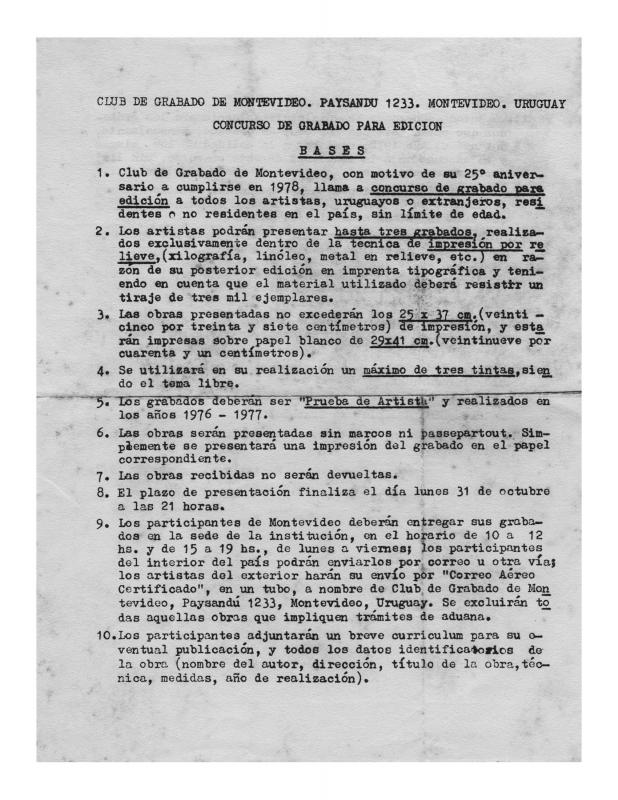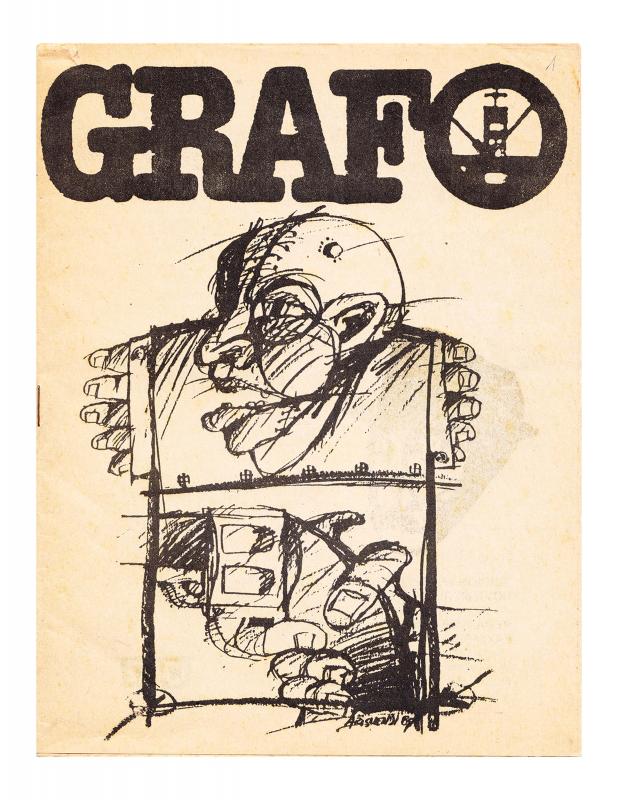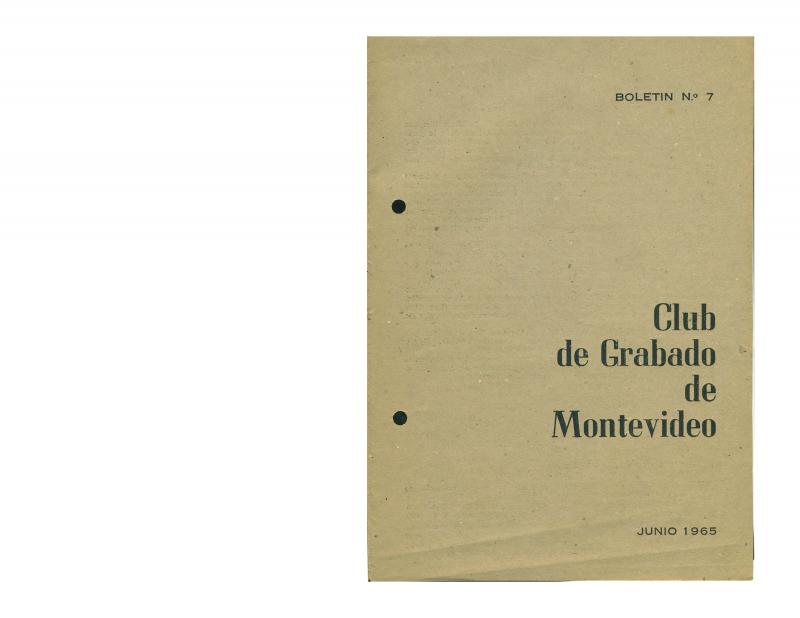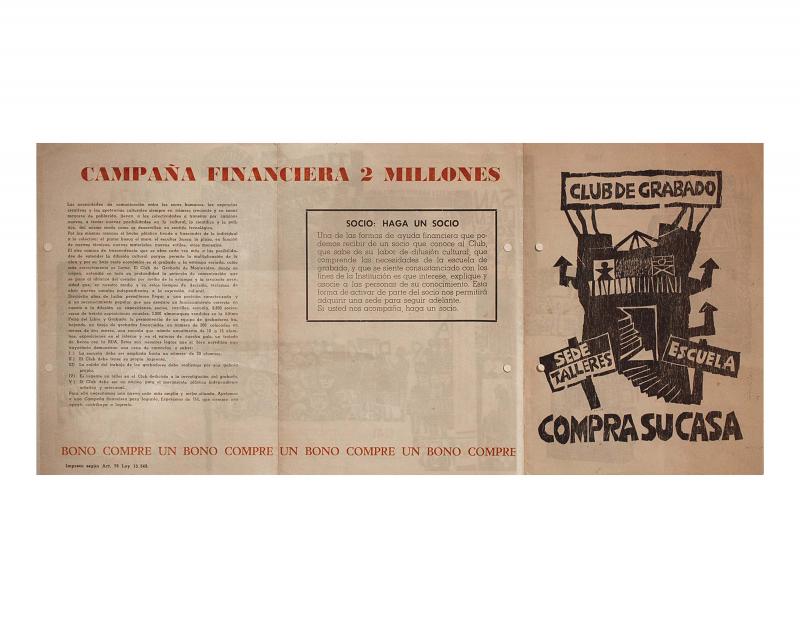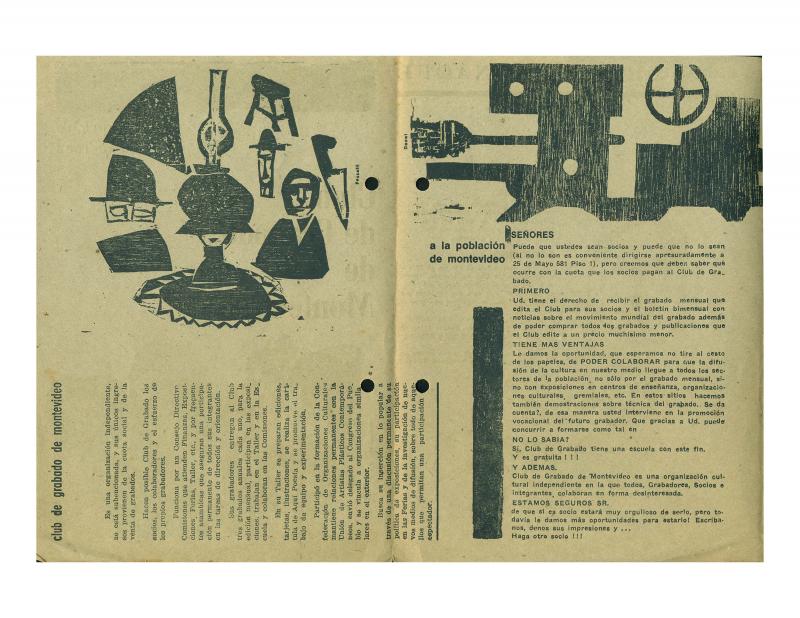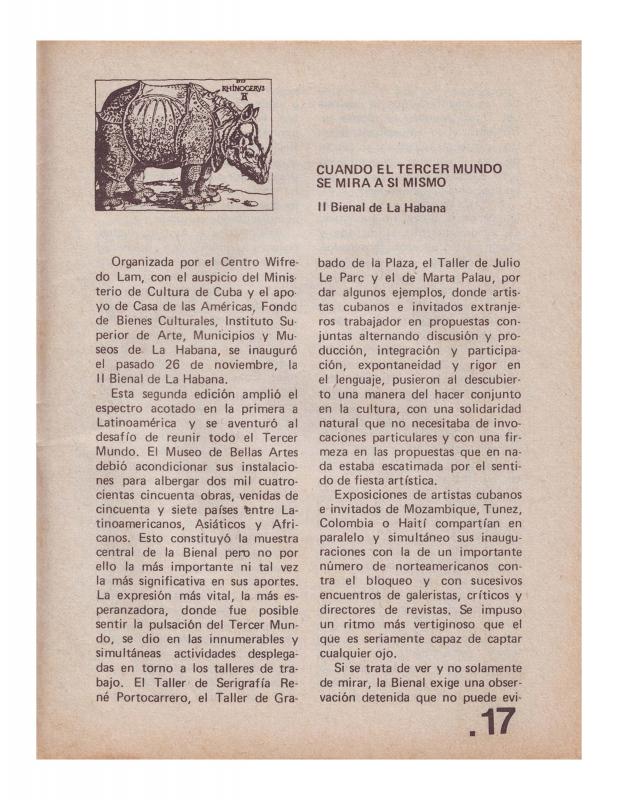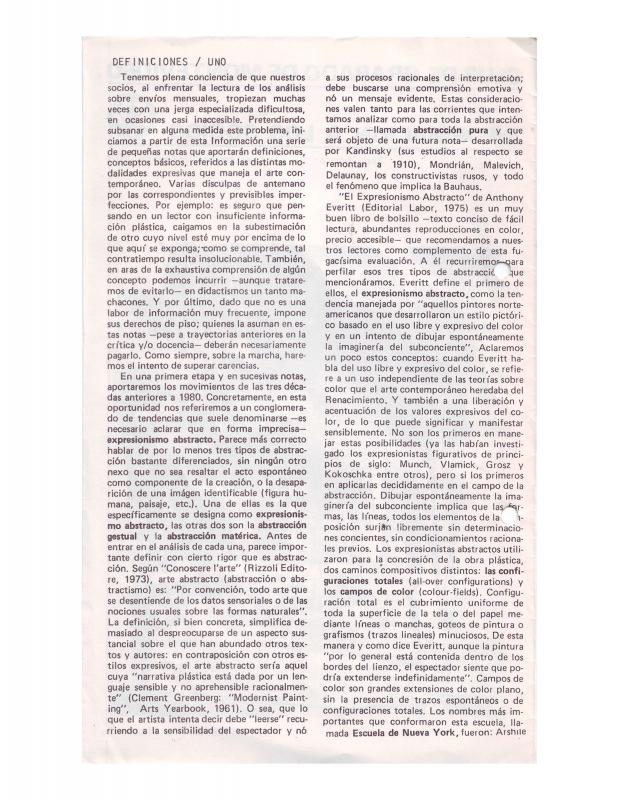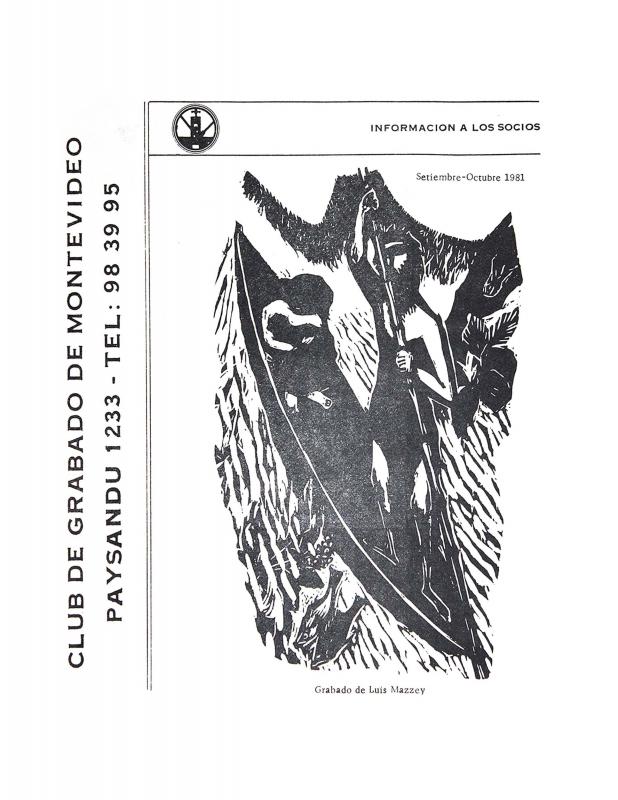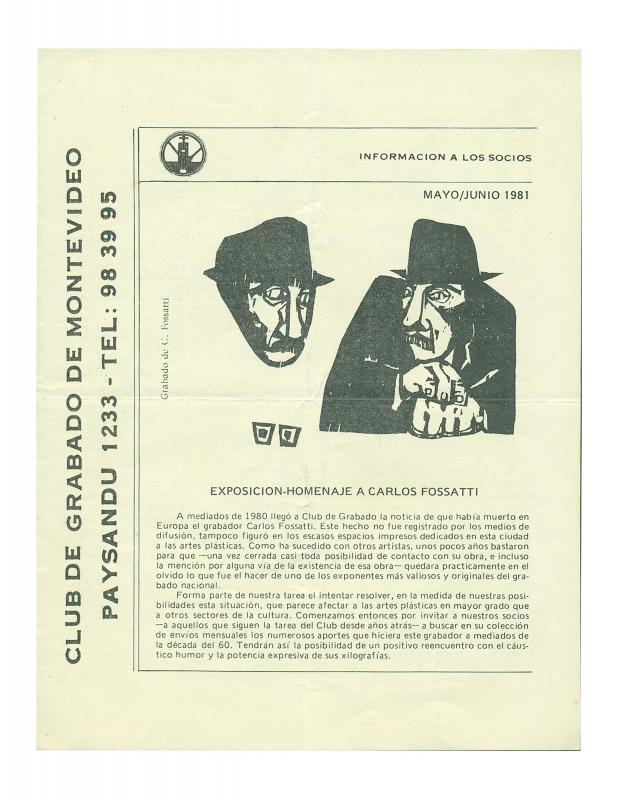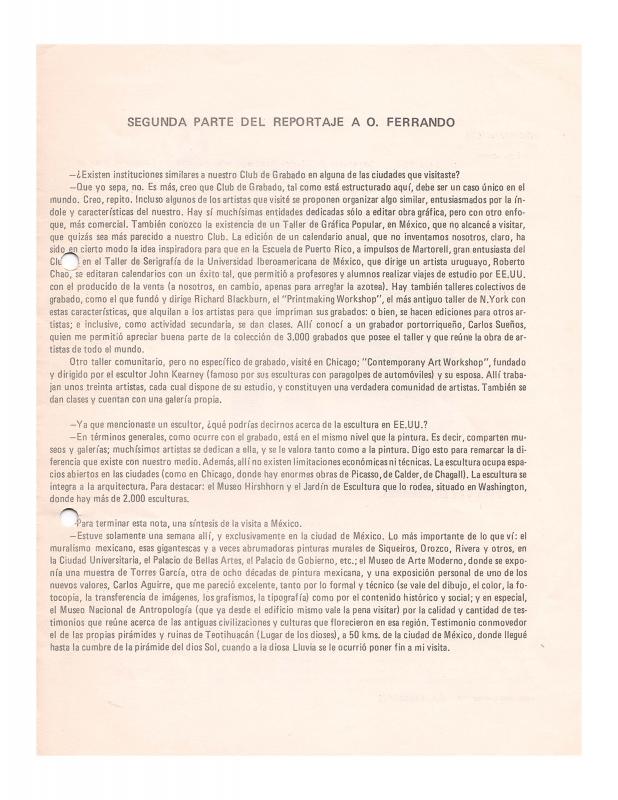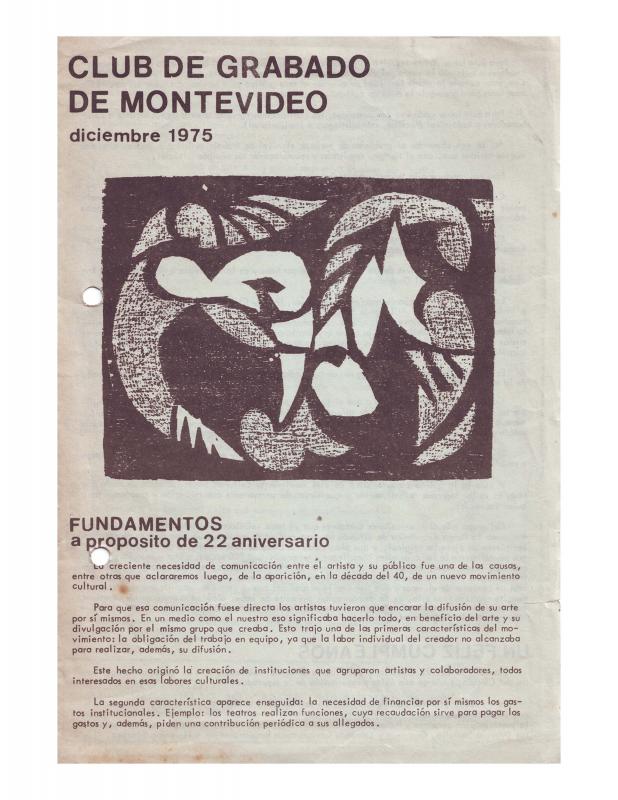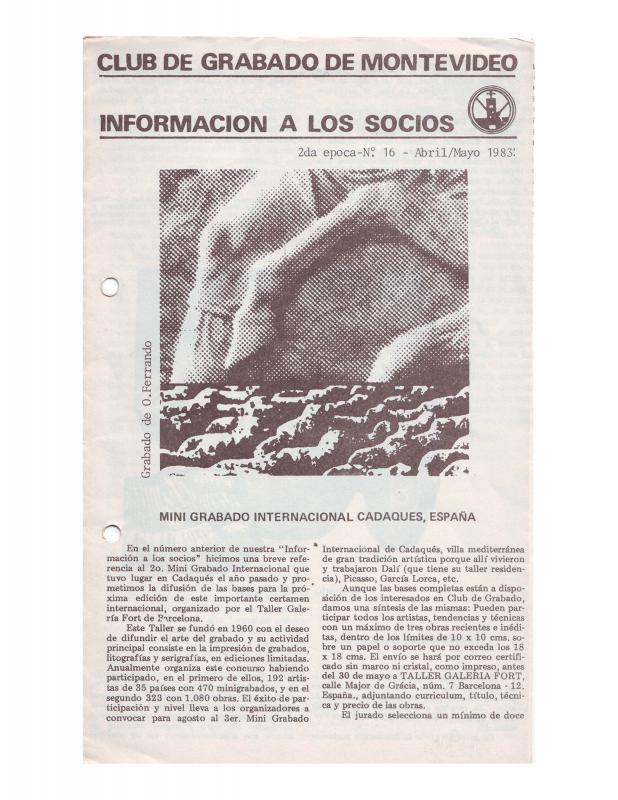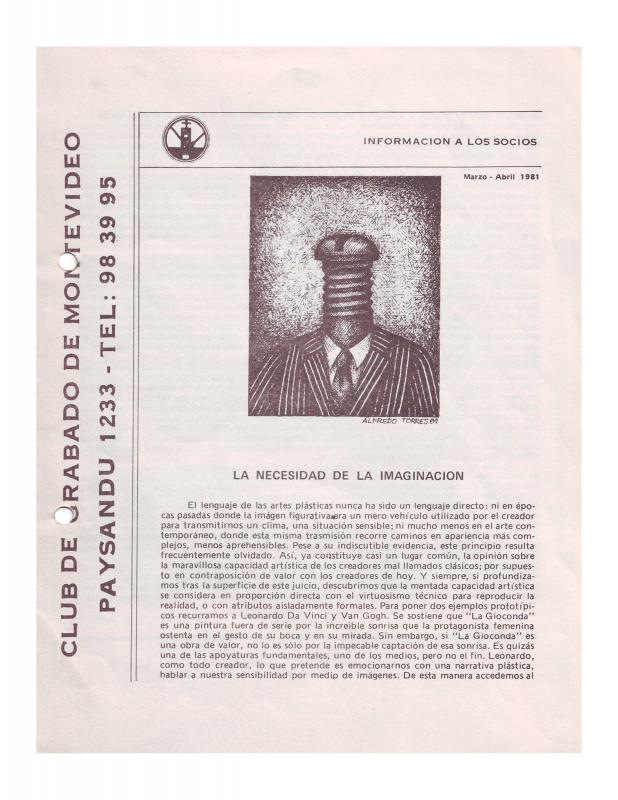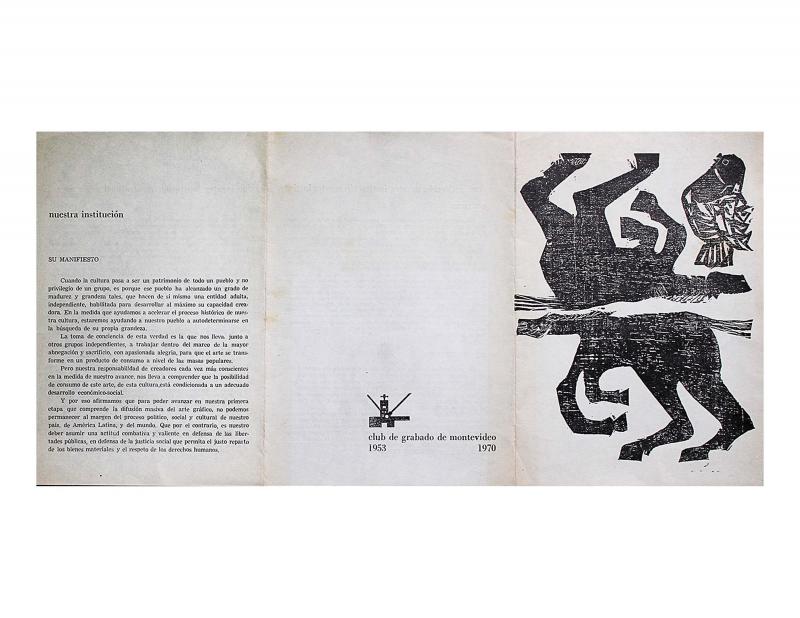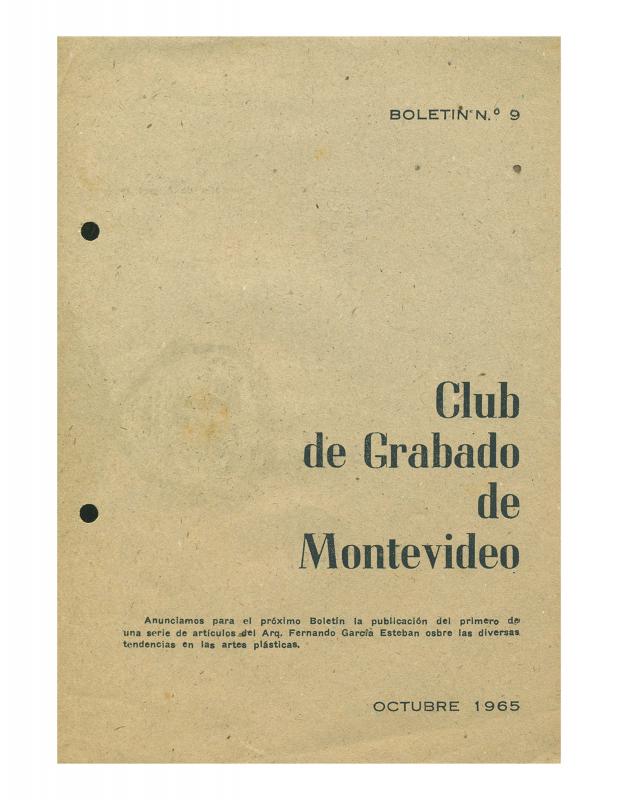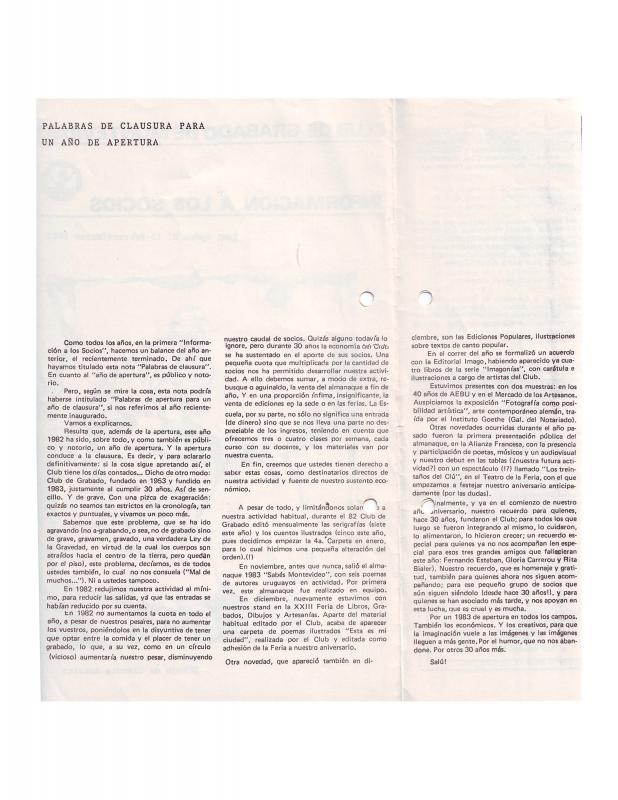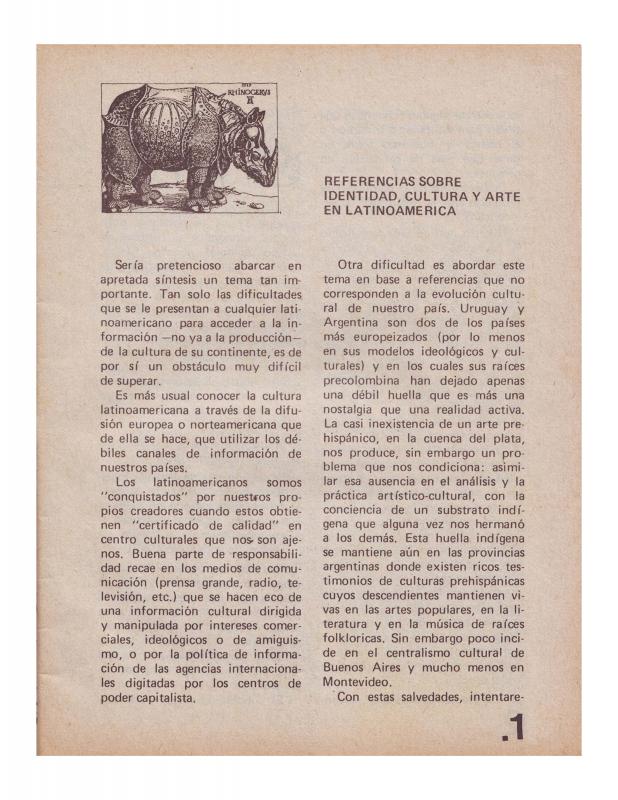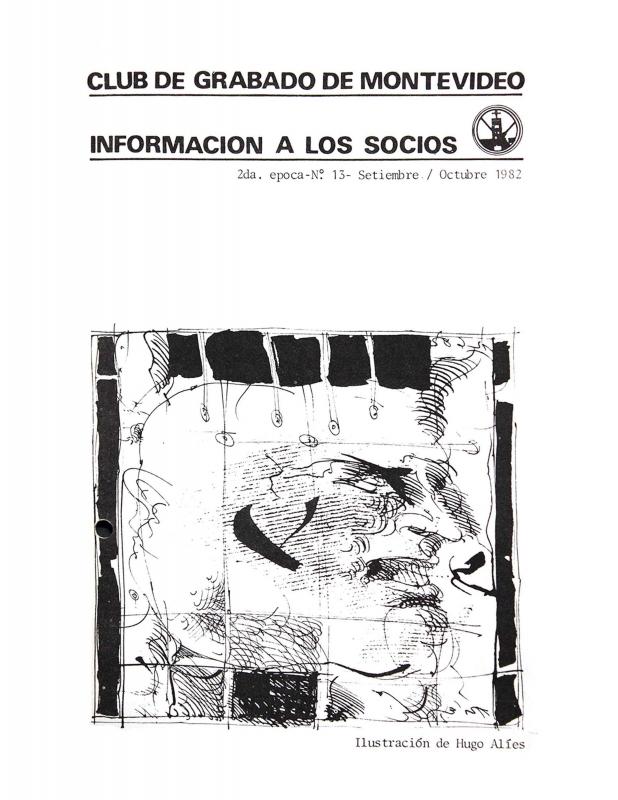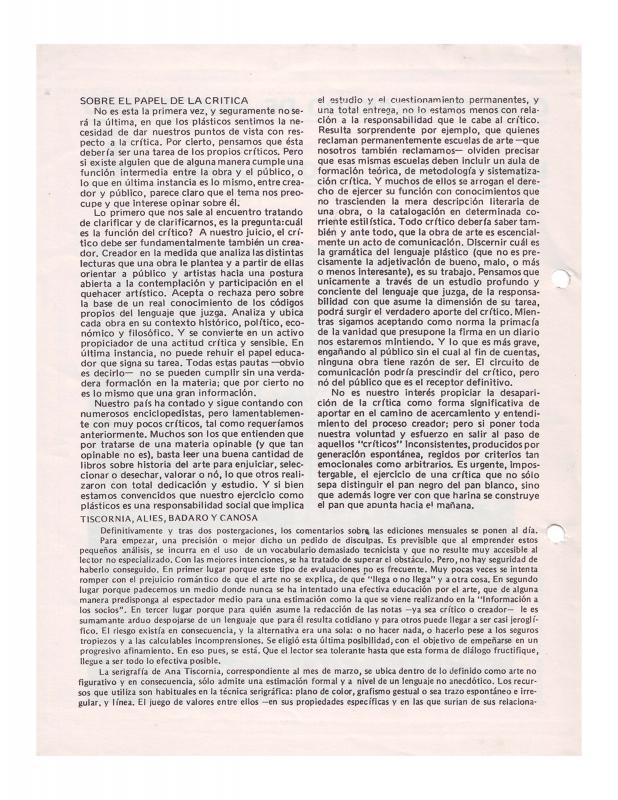In 1981, 27 years after the CGM (Club de Grabado de Montevideo) was founded, the Club’s theoretical and technical focus was undergoing drastic changes that could be seen in its members’ works of art and written statements. This report is an example of a kind of historical review the Club provided to explain these changes to its members as an educational exercise. The membership, which had diminished significantly during the military dictatorship, needed to find new audiences for the group’s new experiments with serial printing. Despite the dominant role that woodcut printing had long played at the CGM (and in Uruguayan printmaking circles in general), artists were now moving on to new techniques. In another development that was a reflection of the times, artists now had less control over, and direct involvement in, the printing materials and processes they used to produce their work. That more traditional “handcraft” approach, which had been a hallmark of its production since the CGM was founded, was being challenged by younger members, most of whom were draftsmen (who joined the Club in the late 1970s). This in turn prompted innovation as artists learned new ways to use the emerging photomechanical printing techniques that were strongly influenced by the aesthetics of graphic design. Internal changes at the CGM went beyond the problems created by new techniques, and sowed confusion among the Club’s captive audience. Meanwhile, the CGM insisted that its mission to communicate with its members in its monthly newsletters remained unchanged.
[As complementary reading see, in the ICAA digital archive, the following articles published by the Club de Grabado de Montevideo: “Concurso de grabado para edición” (doc. no. 863481); “13 años de actividad de Club de Grabado de Montevideo” (doc. no. 1183571); “El arte correo en el Uruguay” (doc. no. 1191850); “Boletín N° 7 Club de Grabado de Montevideo” (doc. no. 1182833); “Club de Grabado compra su casa” (doc. no. 1192649); “Club de Grabado de Montevideo 22 Aniversario 1953 - Agosto 1975” (doc. no. 1183514); “Club de Grabado de Montevideo a la población de Montevideo” (doc. no. 1183124); “Cuando el Tercer Mundo se mira a sí mismo. II Bienal de La Habana” (doc. no. 1184459); “Definiciones / Uno” (doc. no. 1189065); “Entrevista a Luis Mazzey” (doc. no. 1186991); “Entrevista a Óscar Ferrando” (doc. no. 1186747); “Entrevista a Óscar Ferrando [segunda parte]” (doc. no. 1186802); “Fundamentos a propósito de su 22 aniversario” (doc. no. 1182640); “Mini Grabado Internacional de Cadaqués. España” (doc. no. 1191135); “La necesidad de la imaginación” (doc. no. 1190793); “Nuestra institución” (doc. no. 1182010); “Los nuevos movimientos de las artes” (doc. no. 1182868); “Opiniones (I)” (doc. no. 1185411); “Palabras de clausura para un año de apertura” (doc. no. 1191167); “Referencias sobre identidad, cultura y arte en Latinoamérica” (doc. no. 1183641); “Reflexiones en torno a la supuesta crisis de las artes plásticas” (doc. no. 1185539); and “Sobre el papel de la crítica” (doc. no. 1187071)].

